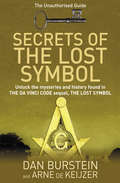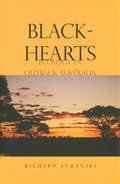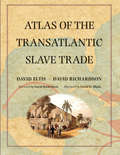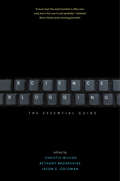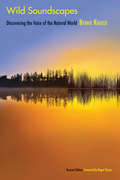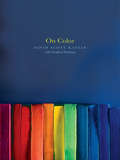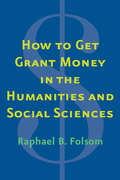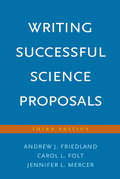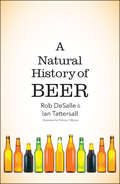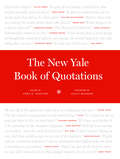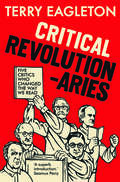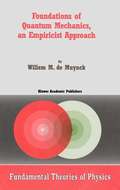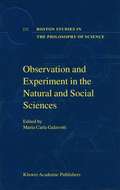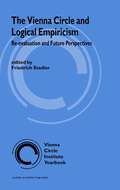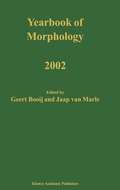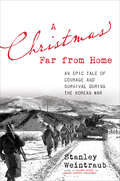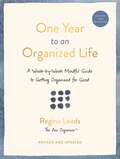- Table View
- List View
Real Men Eat Puffer Fish: And 93 Other Dangerous Things To Consider
by Robert TwiggerThe Dangerous Book for Men, not boys. Every man has faced that emergency where a car needs to be broken into and hot-wired; just as every man needs to be able to mix the perfect dry Martini. The world is a dangerous and unpredictable place; a man never knows when he might be called upon to start a fire with just a coke can, win at croquet or drive a T34 tank. Twigger has plenty of experience of facing down bears, building coracles, swimming with sharks - now he shows every man how to cook a hedgehog, commit hara-kiri and land a Boeing 747.
Secrets of the Lost Symbol: The Unauthorised Guide to the Mysteries Behind The Da Vinci Code Sequel
by Sean Barrett Dan Burstein Arne de KeijzerThe first (unauthorised) literary companion to the mysteries behind Dan Brown's latest blockbuster, THE LOST SYMBOL. From the bestselling Secrets team.Delve into a whole new world of secret societies, ancient mysteries, hidden symbols, new-age philosophy and cutting-edge science ... Discover: the role the Freemasons played in US history; the 'real' Katherine Solomon; the true background of the 'Ancient Mysteries'; the reality of Noetic science and much more ...Presenting ideas from world renowned historians, code-breakers, symbologists, theologians, philosophers and scientists, Burstein and de Keijzer break through the web of conspiracies, mythologies, encrypted signs and alternate histories. SECRETS OF THE LOST SYMBOL is a must-read for anyone who wants to separate reality, speculation, fact and fiction in Dan Brown's global phenomenon.
Secrets of the Code: The Unauthorized Guide To The Mysteries Behind The Da Vinci Code (rev. Ed. )
by Dan BursteinUnauthorised (but authoritative) guide to the mysteries behind the phenomenal bestseller THE DA VINCI CODEReaders of Dan Brown's extraordinary bestseller THE DA VINCI CODE are fascinated by the questions raised in the novel. Was Jesus actually married to Mary Magdalene? Was she one of his disciples and did she write her own gospel? Did they have a child together? Did some geniuses of art and science, people like Leonardo da Vinci and Isaac Newton, belong to secret societies that had the most compelling insider information in history, and did Leonardo convey some of these ideas in The Last Supper and other paintings? SECRETS OF THE CODE is the definitive guide to the novel and provides the curious reader with authoritative explorations into the major themes within THE DA VINCI CODE.
Secrets Of Angels And Demons: The Unauthorized Guide To The Bestselling Novel
by Dan Burstein Arne de KeijzerThe first book to help you understand the mysteries and secret histories within the plot of Dan Brown's bestselling ANGELS AND DEMONS.SECRETS OF ANGELS AND DEMONS provides the curious reader with concise, authoritative explorations of the major themes that help propel the plot of Dan Brown's new bestseller, ANGELS AND DEMONS. Taking the same detailed approach as SECRETS OF THE CODE, Burstein and de Keijzer examine the provocative issues raised in the novel: the existence and scope of the Illuminati and their relationship to other 'secret societies'; the ongoing, centuries-old debate between science and religion; the history and practices of the Vatican and pagan symbolism and its place within the Church. They also explore the world of Bernini, master artist of the Baroque era, and the secret meanings behind his symbolism; what really happened in the trial of Galileo; and the real state-of-the-art of anti-matter technology. This book will delight and engage everyone who finished ANGELS AND DEMONS thinking, 'I need to know more about this book'.
Science Fiction Quotations: From the Inner Mind to the Outer Limits
by Dr Gary Westfahl Arthur C. ClarkeIn this unprecedented collection of science fiction and fantasy quotations, the reader revisits the stunning moment when Mary Shelley’s Frankenstein monster first comes to life; witnesses the transformation of Robert Louis Stevenson’s Dr. Jekyll into Mr. Hyde; is present when Bruce Wayne resolves to become Batman; and overhears the cosmic conclusions of The Incredible Shrinking Man. Drawing upon two centuries of the vast and provocative literature of science fiction and fantasy, this comprehensive book presents more than 2,900 quotations from wide-ranging sources, including science fiction and fantasy stories, novels, films, and television programs.The quotations are organized by topic-alien worlds; darkness and light; robots, androids, and cyborgs; machines and technology; weapons; and more than one hundred others. The reader will encounter the wit and wisdom of renowned authors (H. G. Wells, Ray Bradbury, J. R. R. Tolkien, Ursula K. Le Guin) along with definitive versions of such important statements as Isaac Asimov’s Three Laws of Robotics and Star Trek’s Prime Directive.With its thorough index, this book is both an invaluable resource for the writer or scholar and an irresistible page-turner for the curious browser.
Blackhearts: Ecology in Outback Australia
by Richard SymanskiThis fascinating book is a firsthand account of the adventures of an ornithological field team studying long-tailed finches in outback Australia. In 1991, Nancy Burley, a noted behavioral ecologist, and her husband, Richard Symanski, went to Australia with their one-year-old son and four American students hired as field assistants and babysitter. The social relationships and problems that developed among these individuals in confined and exotic settings and the scientific discoveries that did-and did not-take place form the heart of the book.Symanski begins by telling how he and his wife set up this elaborate field expedition-including the hiring of what seemed to be qualified, compatible, and knowledgeable field assistants. He then describes the harsh realities of their circumstances in Australia: primitive living conditions on an outback cattle station; field sites and subjects for study that were not as expected; and students who were not prepared for the rigors of field life and who became unenthusiastic about the work for which they had been hired. And he tells how he and his wife strove to overcome all the different challenges with which they were confronted. The book provides insight into the demands of professor-student-based fieldwork, particularly when generational conflicts, differing expectations, and culture shock complicate the "business” of doing science.
Atlas of the Transatlantic Slave Trade (The Lewis Walpole Series in Eighteenth-Century Culture and History)
by David Eltis David RichardsonA monumental work, decades in the making: the first atlas to illustrate the entire scope of the transatlantic slave trade Between 1501 and 1867, the transatlantic slave trade claimed an estimated 12.5 million Africans and involved almost every country with an Atlantic coastline. In this extraordinary book, two leading historians have created the first comprehensive, up-to-date atlas on this 350-year history of kidnapping and coercion. It features nearly 200 maps, especially created for the volume, that explore every detail of the African slave traffic to the New World. The atlas is based on an online database (www.slavevoyages.org) with records on nearly 35,000 slaving voyages—roughly 80 percent of all such voyages ever made. Using maps, David Eltis and David Richardson show which nations participated in the slave trade, where the ships involved were outfitted, where the captives boarded ship, and where they were landed in the Americas, as well as the experience of the transatlantic voyage and the geographic dimensions of the eventual abolition of the traffic. Accompanying the maps are illustrations and contemporary literary selections, including poems, letters, and diary entries, intended to enhance readers’ understanding of the human story underlying the trade from its inception to its end.This groundbreaking work provides the fullest possible picture of the extent and inhumanity of one of the largest forced migrations in history.
Science Blogging: The Essential Guide
by Christie Wilcox Bethany Brookshire Jason G. GoldmanHere is the essential how-to guide for communicating scientific research and discoveries online, ideal for journalists, researchers, and public information officers looking to reach a wide lay audience. Drawing on the cumulative experience of twenty-seven of the greatest minds in scientific communication, this invaluable handbook targets the specific questions and concerns of the scientific community, offering help in a wide range of digital areas, including blogging, creating podcasts, tweeting, and more. With step-by-step guidance and one-stop expertise, this is the book every scientist, science writer, and practitioner needs to approach the Wild West of the Web with knowledge and confidence.
Wild Soundscapes: Discovering the Voice of the Natural World, Revised Edition (The\future Ser.)
by Bernie KrauseThrough his organization Wild Sanctuary, Bernie Krause has traveled the globe to hear and record the sounds of diverse natural habitats. Wild Soundscapes, first published in 2002, inspires readers to follow in Krause’s footsteps. The book enchantingly shows how to find creature symphonies (or, as Krause calls them, “biophonies”); use simple microphones to hear more; and record, mix, and create new expressions with the gathered sounds. After reading this book, readers will feel compelled to investigate a wide range of habitats and animal sounds, from the conversations of birds and howling sand dunes to singing anthills. This rewritten and updated edition explains the newest technological advances and research, encouraging readers to understand the earth’s soundscapes in ways previously unimaginable. With links to the sounds that are discussed in the text, this accessible and engaging guide to natural soundscapes will captivate amateur naturalists, field recordists, musicians, and anyone else who wants to fully appreciate the sounds of our natural world.
On Color
by David Kastan Stephen FarthingRanging from Homer to Picasso, and from the Iranian Revolution to The Wizard of Oz, this spirited and radiant book awakens us anew to the role of color in our lives Our lives are saturated by color. We live in a world of vivid colors, and color marks our psychological and social existence. But for all color’s inescapability, we don’t know much about it. Now authors David Scott Kastan and Stephen Farthing offer a fresh and imaginative exploration of one of the most intriguing and least understood aspects of everyday experience. Kastan and Farthing, a scholar and a painter, respectively, investigate color from numerous perspectives: literary, historical, cultural, anthropological, philosophical, art historical, political, and scientific. In ten lively and wide-ranging chapters, each devoted to a different color, they examine the various ways colors have shaped and continue to shape our social and moral imaginations. Each individual color becomes the focal point for a consideration of one of the extraordinary ways in which color appears and matters in our lives. Beautifully produced in full color, this book is a remarkably smart, entertaining, and fascinating guide to this elusive topic.
Physics and Dance
by Emily Coates Sarah DemersA fascinating exploration of our reality through the eyes of a physicist and a dancer—and an engaging introduction to both disciplines From stepping out of our beds each morning to admiring the stars at night, we live in a world of motion, energy, space, and time. How do we understand the phenomena that shape our experience? How do we make sense of our physical realities? Two guides—a former member of New York City Ballet, Emily Coates, and a CERN particle physicist, Sarah Demers—show us how their respective disciplines can help us to understand both the quotidian and the deepest questions about the universe. Requiring no previous knowledge of dance or physics, this introduction covers the fundamentals while revealing how a dialogue between art and science can enrich our appreciation of both. Readers will come away with a broad cultural knowledge of Newtonian to quantum mechanics and classical to contemporary dance. Including problem sets and choreographic exercises to solidify understanding, this book will be of interest to anyone curious about physics or dance.
How to Get Grant Money in the Humanities and Social Sciences
by Raphael Brewster FolsomA valuable and engaging guide to applying for—and getting—grants in the humanities and social sciences Scholars in the humanities and social sciences need money to do research. This book shows them how to get it. In this accessible volume, Raphael Folsom shares proven strategies in a series of short, witty chapters. It features tips on how graduate students, postdocs, and young faculty members can present themselves and their work in the best possible light. The book covers the basics of the grant-writing process, including finding a mentor, organizing a writing workshop, conceptualizing the project on a larger scale, and tailoring an application for specific submissions. The book includes interviews with nine of the most respected scholars in the country, each of whom has evaluated thousands of grant applications. The first authoritative book on the subject, Folsom's indispensable work will become a must-have resource for years to come.
Writing Successful Science Proposals: Third Edition
by Andrew J. Friedland Carol L Folt Jennifer L. MercerAn authoritative how-to guide that explains every aspect of science proposal writing This fully revised edition of the authoritative guide to science proposal writing is an essential tool for any researcher embarking on a grant or thesis application. In accessible steps, the authors detail every stage of proposal writing, from conceiving and designing a project to analyzing data, synthesizing results, estimating a budget, addressing reviewer comments, and resubmitting. This new edition is updated to address changes and developments over the past decade, including identifying opportunities and navigating the challenging proposal-funding environment. The only how-to book of its kind, it includes exercises to help readers stay on track as they develop their grant proposals and is designed for those in the physical, life, environmental, biomedical, and social sciences, as well as engineering.
A Natural History of Beer
by Rob DeSalle Ian TattersallA celebration of beer—its science, its history, and its impact on human culture What can beer teach us about biology, history, and the natural world? From ancient Mesopotamian fermentation practices to the resurgent American craft brewery, Rob DeSalle and Ian Tattersall peruse the historical record and traverse the globe for engaging and often surprising stories about beer. They explain how we came to drink beer, what ingredients combine to give beers their distinctive flavors, how beer’s chemistry works at the molecular level, and how various societies have regulated the production and consumption of beer. Drawing from such diverse subject areas as animal behavior, ecology, history, archaeology, chemistry, sociology, law, genetics, physiology, neurobiology, and more, DeSalle and Tattersall entertain and inform with their engaging stories of beer throughout human history and the science behind it all. Readers are invited to grab a beer and explore the fascinating history of its creation.
The Essential Guide to Intellectual Property
by Aram SinnreichA broad introduction to the changing roles of intellectual property within society Intellectual property is one of the most confusing—and widely used—dimensions of the law. By granting exclusive rights to publish, manufacture, copy, or distribute information and technology, IP laws shape our cultures, our industries, and our politics in countless ways, with consequences for everyone, including artists, inventors, entrepreneurs, and citizens at large. In this engaging, accessible study, Aram Sinnreich uncovers what’s behind current debates and what the future holds for copyrights, patents, and trademarks.
The New Yale Book of Quotations
by Fred R. Shapiro and Louis MenandA revised, enlarged, and updated edition of this authoritative and entertaining reference book —named the #2 essential home library reference book by the Wall Street Journal“Shapiro does original research, earning [this] volume a place on the quotation shelf next to Bartlett's and Oxford's.”—William Safire, New York Times Magazine (on the original edition) “A quotations book with footnotes that are as fascinating to read as the quotes themselves.”—Arthur Spiegelman, Washington Post Book World (on the original edition) Updated to include more than a thousand new quotations, this reader-friendly volume contains over twelve thousand famous quotations, arranged alphabetically by author and sourced from literature, history, popular culture, sports, digital culture, science, politics, law, the social sciences, and all other aspects of human activity. Contemporaries added to this edition include Beyoncé, Sandra Cisneros, James Comey, Drake, Louise Glück, LeBron James, Brett Kavanaugh, Lady Gaga, Lin-Manuel Miranda, Barack Obama, John Oliver, Nancy Pelosi, Vladimir Putin, Bernie Sanders, Donald Trump, and David Foster Wallace. The volume also reflects path-breaking recent research resulting in the updating of quotations from the first edition with more accurate wording or attribution. It has also incorporated noncontemporary quotations that have become relevant to the present day. In addition, The New Yale Book of Quotations reveals the striking fact that women originated many familiar quotations, yet their roles have been forgotten and their verbal inventions have often been credited to prominent men instead. This book’s quotations, annotations, extensive cross-references, and large keyword index will satisfy both the reader who seeks specific information and the curious browser who appreciates an amble through entertaining pages.
Critical Revolutionaries: Five Critics Who Changed the Way We Read
by Terry EagletonTerry Eagleton looks back across sixty years to an extraordinary critical milieu that transformed the study of literature Before the First World War, traditional literary scholarship was isolated from society at large. In the years following, a younger generation of critics came to the fore. Their work represented a reaction to the impoverishment of language in a commercial, utilitarian society increasingly under the sway of film, advertising, and the popular press. For them, literary criticism was a way of diagnosing social ills and had a vital moral function to perform. Terry Eagleton reflects on the lives and work of T. S. Eliot, I. A. Richards, William Empson, F. R. Leavis, and Raymond Williams, and explores a vital tradition of literary criticism that today is in danger of being neglected. These five critics rank among the most original and influential of modern times, and represent one of the most remarkable intellectual formations in twentieth-century Britain. This was the heyday of literary modernism, a period of change and experimentation—the bravura of which spurred on developments in critical theory.
Foundations of Quantum Mechanics, an Empiricist Approach (Fundamental Theories of Physics #127)
by W.M. de MuynckTaking a new perspective provided by a generalization of the mathematical formalism encompassing positive operator-valued measures, this book views old and new problems of the foundations of quantum mechanics. It demonstrates the crucial role of the generalized formalism in fundamental issues and practical applications.
Observation and Experiment in the Natural and Social Sciences (Boston Studies in the Philosophy and History of Science #232)
by Maria Carla GalavottiThis volume is a contribution to the ongoing debate on the distinction between a ‘context of justification’ and a ‘context of discovery’. It is meant for researchers and advanced students in philosophy of science, and for natural and social scientists interested in foundational topics. Spanning a wide range of disciplines, it combines the viewpoint of philosophers and scientists and casts a new interdisciplinary perspective on the problem of observation and experimentation.
The Vienna Circle and Logical Empiricism: Re-evaluation and Future Perspectives (Vienna Circle Institute Yearbook #10)
by F. StadlerThis work is for scholars, researchers and students in history and philosophy of science focusing on Logical Empiricism and analytic philosophy (of science). It provides historical and systematic research and deals with the influence and impact of the Vienna Circle/Logical Empiricism on today's philosophy of science. It also explores the intellectual context of this scientific philosophy and focuses on main figures and peripheral adherents.
Yearbook of Morphology 2002 (Yearbook of Morphology)
by G. E. Booij Jaap Van MarleThe Yearbook of Morphology 2002 discusses the morphology of a variety of pidgin and Creole languages which appear to have much more morphology than traditionally assumed. Other topics include the morphological use of truncation for the coinage of proper names in Germanic and Romance languages, the way affixes are combined and ordered in complex words, and the complex linguistic principles behind these orderings.
The Turk Who Loved Apples: And Other Tales of Losing My Way Around the World
by Matt GrossWhile writing his celebrated Frugal Traveler column for the New York Times, Matt Gross began to feel hemmed in by its focus on what he thought of as "traveling on the cheap at all costs.” When his editor offered him the opportunity to do something less structured, the Getting Lost series was born, and Gross began a more immersive form of travel that allowed him to "lose his way all over the globe”—from developing-world megalopolises to venerable European capitals, from American sprawl to Asian archipelagos. And that's what the never-before-published material in The Turk Who Loved Apples is all about: breaking free of the constraints of modern travel and letting the place itself guide you. It's a variety of travel you'll love to experience vicariously through Matt Gross—and maybe even be inspired to try for yourself.
A Christmas Far from Home: An Epic Tale Of Courage And Survival During The Korean War
by Stanley WeintraubA Christmas Far from Home An Epic Tale of Courage and Survival during the Korean War Weintraub, Stanley (8 ratings) eBook, 2014 Book Available Streaming Audiobook Available An anecdote-rich narrative of the 1950 holiday season during the Korean War, when, just after Thanksgiving, tens of thousands of US troops were surrounded in the Chosin reservoir area by hundreds of thousands of Chinese troops and began a terrible and difficult retreat, which finally ended on Christmas Day.
When Sex Hurts: Understanding and Healing Pelvic Pain
by Andrew Goldstein Caroline Pukall Irwin Goldstein Dr. Jill KrapfFor the 20 million people who suffer from pelvic pain: the completely revised and updated guide for making sex feel good again. Pelvic pain can lead to embarrassment, silence, and misdiagnosis. It can hurt your relationship as well as your sense of self. Tackling the stereotypes, myths, and realities of pelvic pain, this easy‑to‑understand, accessible guide will help readers get the help they need and deserve, offering key information on: The most urgent questions about the causes of pelvic pain The more than twenty causes of pelvic pain How to find the right doctor The relationship between pelvic sex and genetics The newest in treatment for pelvic pain and pelvic pain indications How psychological factors can contribute to and reduce pelvic pain Featuring groundbreaking research and stories from people who've lived it, When Sex Hurts provides the tools you need to stop hurting and start healing.
One Year to an Organized Life: A Week-by-Week Mindful Guide to Getting Organized for Good
by Regina LeedsA comprehensive, week-by-week bible to completely streamline all aspects of your life—now revised & updated for a global pandemic world of working from home and learning to de-stress while you de-clutter. Who would you be if you felt at peace and had more time and money? An organized life enables you to have more freedom, less aggravation, better health, and to get more done. Regina Leeds has helped even the messiest turn their lives around. One Year to an Organized Life is a unique week-by-week approach that you can begin at any time of year. Regina helps you break down tasks and build routines over time so that life becomes simple, not overwhelming. Whether you're living in chaos or just looking for new ways to simplify, this essential book will help you get the whole household organized-and stay that way. Covid has shaken humanity to the core and forced us to slow down and reimagine the way we use our living spaces. In a flash, the space we knew simply as home was suddenly a classroom, our office and the gym. And, at a time when stress and anxiety is at an all-time high, it no longer seems odd to meditate. It feels life-saving. If life is to be re-imagined, shouldn&’t we also do that with our living spaces? In this revised and updated edition of One Year to an Organized Life, Regina Leeds reveals how to optimize your space—for work, family and daily calmness (with plenty of new affirmations and reward systems built into her organizing tips).

